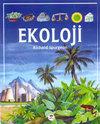Teucrium as a Novel Discovered Hyperaccumulator for the Phytoextraction of Ni-contaminated Soils
Q3 Environmental Science
引用次数: 12
Abstract
The success of phytoextraction, a promising new method that uses green plants to detoxify metals, depends upon the identification of suitable plant species that hyperaccumulate heavy metals in their above ground parts. In this study, the roots and above ground parts of the Teucrium polium plants grown in serpentine and non-serpentine soils as well as soil samples were analyzed for their Ni and Co concentrations. The Ni concentrations between 9,678 and 14,110 mg kg-1 in above ground parts of Teucrium polium plants grown in serpentine soils were found together with the translocation factors between 2.23 and 3.23, and enrichment coefficients between 5.9 and 9.2. The cobalt concentrations in the same samples were found to be in the ranges of 3.1 and 6.4 mg kg-1 together with the translocation factors 2.8 and 15, and with enrichment coefficients of 0.01 and 0.03. The Ni/Co-ratios in the ammonium chloride and ammonium acetate extracts of the soils were found to be higher than 4 and 10 fold for the serpentine soils, respectively, while the values were below or about 1-fold for both the extracts of the non-serpentine soils. The ratios of Ni/Co concentrations in the roots and aboveground parts of Teucrium polium grown in the serpentine soil were significantly higher (up to 12,857-times) than the ratios for Teucrium polium grown in the non-serpentine soils (up to 8.1-times). These values are highly important and the original results. Consequently, Teucrium polium, a new hyperaccumulator plant for nickel, has been discovered and suggested for phytoextraction of碲作为一种新发现的植物萃取镍污染土壤的超蓄积物
植物萃取法是一种利用绿色植物对重金属进行脱毒的新方法,其成功与否取决于能否识别出在其地上部分超富集重金属的合适植物种类。本研究对生长在蛇纹石和非蛇纹石土壤中的白铅植物根系和地上部分以及土壤样品的Ni和Co浓度进行了分析。蛇纹石土壤中生长的铕植物地上部分的镍含量在9,678 ~ 14,110 mg kg-1之间,转运因子在2.23 ~ 3.23之间,富集系数在5.9 ~ 9.2之间。同一样品的钴浓度分别为3.1和6.4 mg kg-1,转运因子分别为2.8和15,富集系数分别为0.01和0.03。蛇纹石土壤的氯化铵和乙酸铵提取物的Ni/ co比值分别高于4倍和10倍,而非蛇纹石土壤的这两种提取物的Ni/ co比值均低于或约为1倍。在蛇纹石土壤中生长的铕根部和地上部分的Ni/Co浓度比(最高达12,857倍)显著高于非蛇纹石土壤中生长的铕(最高达8.1倍)。这些值是非常重要的和原始的结果。因此,Teucrium polium,镍、新hyperaccumulator植物被发现并建议phytoextraction的
本文章由计算机程序翻译,如有差异,请以英文原文为准。
求助全文
约1分钟内获得全文
求助全文
来源期刊

Ekoloji
环境科学-生态学
CiteScore
1.10
自引率
0.00%
发文量
0
审稿时长
>12 weeks
期刊介绍:
Cessation. Ekoloji is an international journal that focuses on papers that report results from original research on all disciplines engaged in the field of environmental research. We welcome articles that cover the entire spectrum of environmental problems and environmental pollutants, whether chemical, biological or physical. Its coverage extends to all environmentally related issues: air and water pollution, solid waste, noise, recycling, natural resources, ecology and environmental protection. It includes articles on basic and applied environmental pollution research, including environmental engineering and environmental health. All types of pollution are covered, including atmospheric pollutants, detergents, fertilizers, industrial effluents, metals, mining wastes, oil, pesticides, plastics, radioactive materials and sewage. It also includes research papers on ecological and environmental issues such as climate change, biodiversity. The primary criteria for publication are scientific quality and ecological/environmental significance.
The journal will be read and contributed to by biologists, applied ecologists, environmental scientists, natural resource specialists, environmental engineers, environmental health specialists, agro-ecologists, veterinaries, agricultural engineers, landscape planners and designers. The journal welcomes full "research papers" and short "research notes", only in the English language.
 求助内容:
求助内容: 应助结果提醒方式:
应助结果提醒方式:


